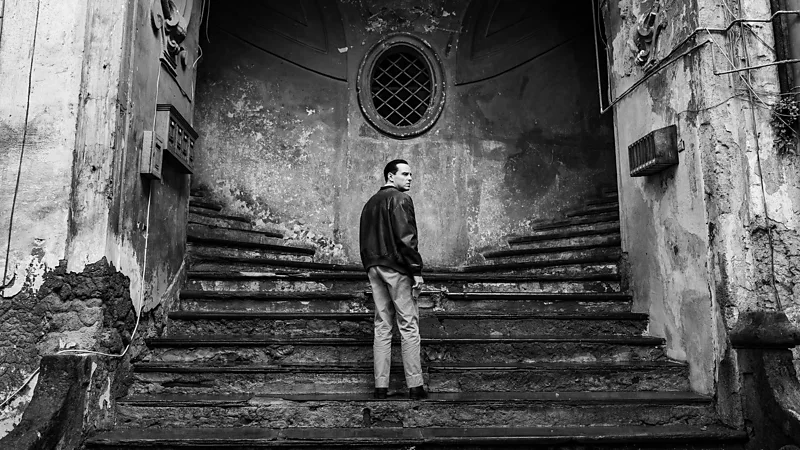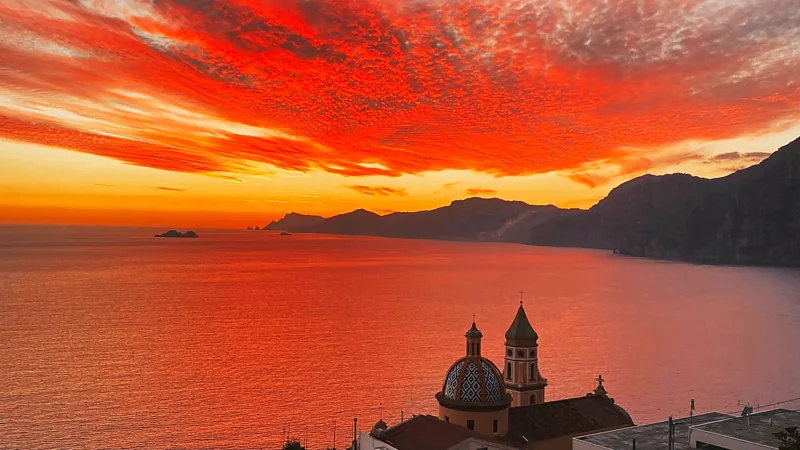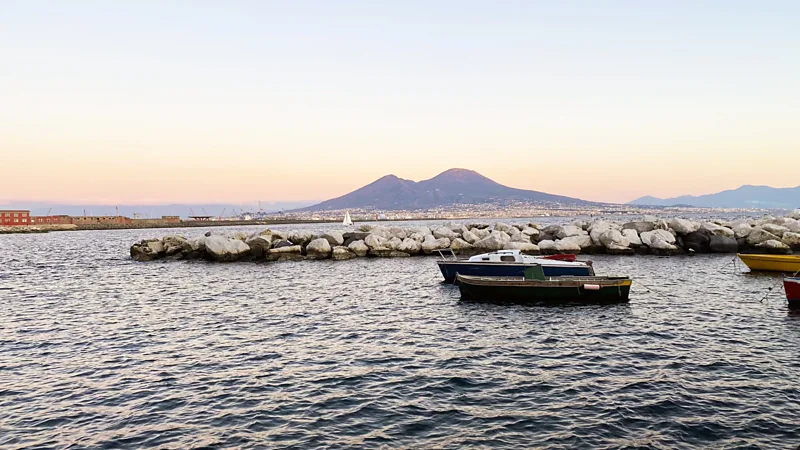Where to find Italy's 'dolce vita' in real life
 Despite its noir thriller genre, Netflix's Ripley breathes new vitality into Italy's romanticized concept of la dolce vita, or "the sweet life." This notion, immortalized by Federico Fellini's iconic 1960 film, has long depicted Italy as a picturesque paradise where dreams come true.
Despite its noir thriller genre, Netflix's Ripley breathes new vitality into Italy's romanticized concept of la dolce vita, or "the sweet life." This notion, immortalized by Federico Fellini's iconic 1960 film, has long depicted Italy as a picturesque paradise where dreams come true.
La dolce vita conjures images of vibrant neon Aperol Spritzes, buzzing Vespa-filled streets, leisurely cappuccinos in bustling piazzas, and the endless expanse of the Mediterranean sea and sky. These visuals have captivated filmmakers, writers, and more recently, social media influencers, perpetuating the allure of Italy's enchanting lifestyle.
Adding a dash of bitterness to this year's dolce vita narrative is Ripley, the latest adaptation of Patricia Highsmith's 1955 novel, The Talented Mr. Ripley, now streaming on Netflix. Helmed by Academy Award winner Steven Zaillian and starring Irish actor Andrew Scott, the series revisits the dreamy landscapes of Italy's Amalfi Coast and Venice, albeit through a Hitchcockian lens of noir. Zaillian's Ripley presents Italy's technicolor vistas in stark black and white, offering viewers a glimpse of the country's beauty alongside its dark underbelly, where sinister events unfold against picturesque backdrops.
As Ripley tantalizes audiences with its portrayal of Italian allure, it prompts the perennial question: does the elusive dolce vita truly exist? And if so, how can it be experienced in today's world?
Visit the Amalfi Coast
 In Ripley, the titular character Tom embarks on a deceptive mission to persuade Dickie Greenleaf, a wealthy man's son, to return home from his extended Italian getaway.
In Ripley, the titular character Tom embarks on a deceptive mission to persuade Dickie Greenleaf, a wealthy man's son, to return home from his extended Italian getaway.
Tom's journey begins in Atrani, a charming village nestled on the Amalfi Coast, marking the focal point of much of the storyline. This picturesque region epitomizes the vision of "la dolce vita," with its rugged landscapes adorned by lemon orchards, medieval churches perched atop scenic cliffs, and vintage cars tucked away in pastel-hued alleyways.
The Amalfi Coast exudes a timeless quality, serving as a living time capsule that epitomizes the essence of the "sweet life." Stemming from Fellini's iconic film set in Rome, the imagery associated with la dolce vita is inherently intertwined with mid-20th-century aesthetics. The 1950s and '60s are often romanticized as a "golden era" for Italy, characterized by a blend of pre-war traditions, rural life, religious devotion, and post-war industrial advancements symbolized by iconic Italian brands like Fiat, Vespa, Olivetti, and Moka coffee machines.
While Rome embraced modernity, the Amalfi Coast retains a preference for preserving its traditional way of life. Beneath its postcard-perfect exterior, the region's idyllic facade masks simmering issues, contrasting with the chaotic energy of Rome.
In Ripley, the story unfolds in the same year as La Dolce Vita, with meticulous attention to historical accuracy evident in every exquisite detail, from postage stamps to lire notes. Italian nationals of a certain age may experience waves of nostalgia as they encounter relics of a bygone era, such as luxurious train cars and a soundtrack featuring music by the beloved Italian pop star Mina from the 1960s.
Today, in Positano and Amalfi, visitors are presented with a packaged version of the dolce vita experience. These ancient towns are dominated by restaurants and hotels catering to tourists' expectations. Plasticized menus in multiple languages abound, and narrow cobblestone streets are often congested with tourists, obscuring the breathtaking views. In the winter months, these cities become quiet, almost deserted, with souvenir stalls resembling closed amusement park rides, waiting for the bustling crowds to return during the high season.
However, it is in the smaller, less-visited fishing villages of Praiano and Atrani where a more authentic version of the dolce vita still thrives.
In Praiano, situated east of Positano, locals congregate at the Bar del Sole to enjoy cappuccinos in the morning and Campari as the evening approaches. Neapolitan pop music fills the air as shops offer colorful ceramic tiles that adorn the many homes along the winding Via Masa leading to the town's small beach. On Sundays, the bell of the UNESCO-listed Church of San Gennaro calls the community together in the small square overlooking the breathtaking coastal landscape. While tourists are present, they are just one aspect of Praiano's vibrant community life. Local eateries like chef Gennaro Galani's seafood restaurant Saghir and the Trattoria San Gennaro attract both locals and visitors alike.
For an adrenaline-inducing journey, one can take a bus ride to Amalfi via the winding SS163 state road, with its dizzying drops of 300 meters. From there, an 800-meter walk east through the Luna Rossa car park leads to Atrani. Despite its small size, Atrani has fiercely preserved its traditions, much like it embraces its petite beach, which remains free from the crowds that flock to the shorelines of Positano and Amalfi.
Atrani holds a special allure - in Ripley, Dickie's girlfriend, Marge, struggles to capture its essence in a book. In reality, Atrani served as a haven for the Dutch artist MC Escher, who drew inspiration from its intricate staircases for some of his works.
Throughout the series, Italy's staircases symbolize Tom's uphill battle, both socially and emotionally, a theme that resonates with both locals and visitors today. For the adventurous, a climb of 750 steps leads to Atrani's crown jewel: the Sanctuary of Santa Maria del Bando, a Baroque chapel perched atop a cliff with stunning views of the bay. However, reaching Dickie's Moorish-styled mansion (Villa Torricella) requires a boat ride to Capri, where it can actually be booked through Airbnb.
Naples: "The dolce vita's" darker side
Beneath the surface of the dolce vita often lies the bitter truth, and Italy is not immune to its share of challenges. The country grapples with longstanding issues such as economic disparities between the north and south, high unemployment rates, crime, and a sense of disillusionment among its populace. Many of those employed in sustaining the dream of the dolce vita for tourists are themselves young graduates forced into low-paying service jobs due to a lack of other opportunities.
The new adaptation of Ripley often jolts viewers out of their dolce vita daydreams, shedding light on the cracks beneath the surface, much like Fellini's film did in 1960. In contrast to the more picturesque 1999 version, the newer rendition delves into darker themes, referencing Italian bureaucracy, crime, and even the influence of Naples's infamous Camorra mafia. Tom encounters scams and shady characters, highlighting the underbelly of Italian society. References to painter Caravaggio imbue the series with a baroque sensibility, emphasizing Italy's stark contrasts.
While Naples is often singled out as the epitome of Italy's darker side, the Amalfi Coast shares a cultural context with the city, featuring staples of the dolce vita such as pizza and espresso. Despite its fairy tale-like appearance, with Baroque palaces set against the backdrop of Mount Vesuvius, Amalfi doesn't shy away from its challenges. Like the sheets hanging on clotheslines in its streets, the city reveals its struggles, having endured economic and social hardships. However, it's also a place where vibrant traditions, from street art to local folklore, have emerged as a response to adversity.
"Doing nothing is sweet"
While the dolce vita lifestyle is often associated with a specific aesthetic, it's also characterized by a distinct philosophy known as dolce far niente, or "the sweetness of doing nothing." In Ripley, this concept drives much of the plot, as Dickie's father expresses concern over his son's lack of ambition.
Life in Italian villages, with their temperate climate and agrarian traditions, typically unfolds at a leisurely pace, revolving around the communal lunch table. This lifestyle was romanticized by Golden Age Cinecittà-Hollywood and packaged into a concept synonymous with Italy's way of living, becoming a lucrative selling point.
However, the essence of the dolce vita isn't confined to the Amalfi Coast; it can be found throughout Italy, even in its bustling cities. Whether it's enjoying a quick espresso at a café, strolling aimlessly around the town square, or indulging in a leisurely four-hour lunch, the dolce vita is about savoring the simple pleasures of daily life with spontaneity.
In Ripley, Marge's decision to write a book about Atrani reflects the irony that not much happens in the sleepy village, then or now. Locals leisurely pass time in the piazzas, carrying out mundane tasks like grocery shopping and enjoying the tranquil atmosphere. Visitors, meanwhile, seek out excitement but often find themselves content with a gelato and aperitivo in the piazza, gazing out at the serene Gulf of Naples. Embracing the dolce far niente mindset can be a radical act, urging individuals to let go and appreciate moments of silence or chaos alike.
Embracing the dolce far niente mindset can be a radical act, urging individuals to let go and appreciate moments of silence or chaos alike.




































